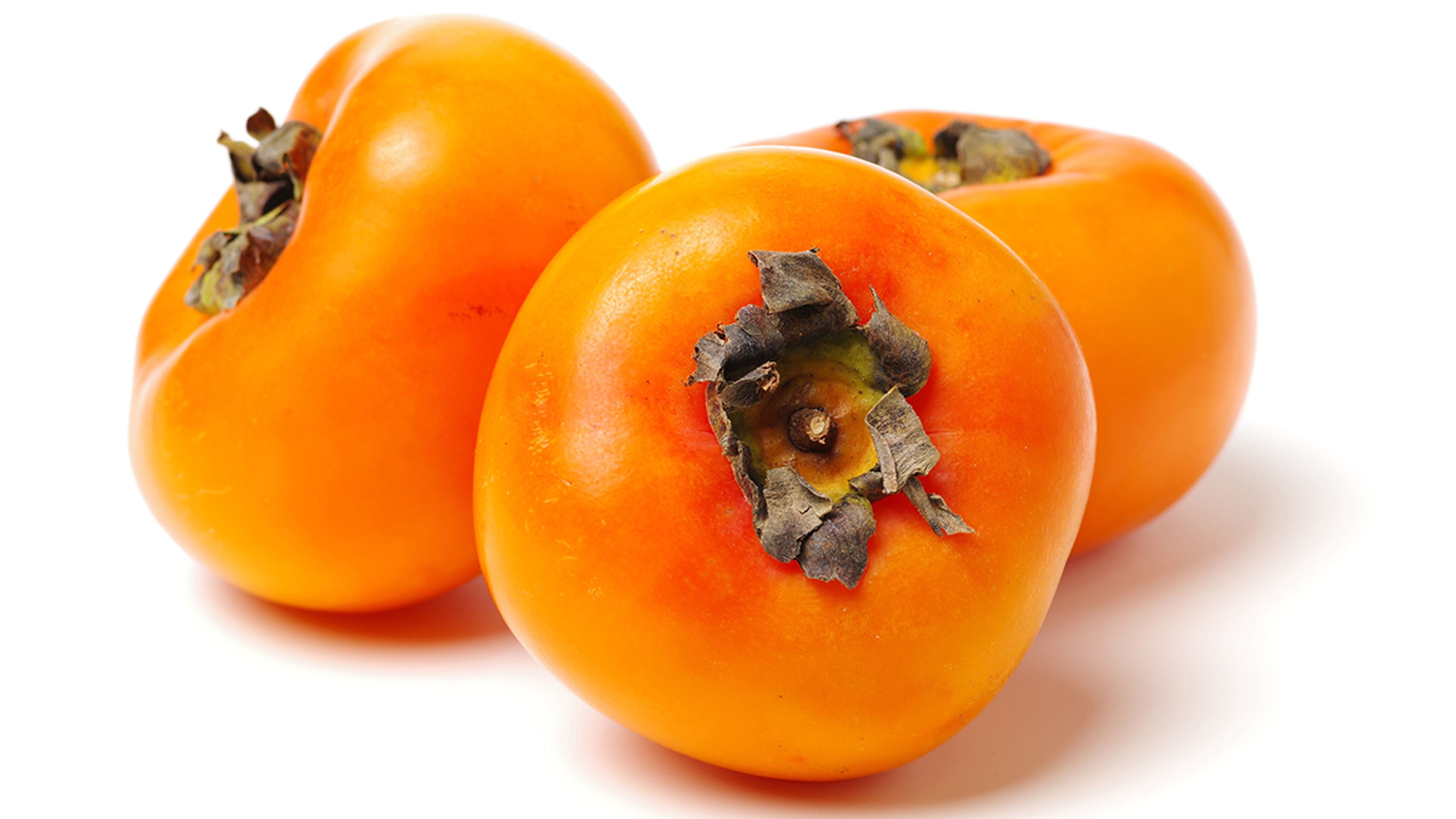What Is a Persimmon?
Meet the “fruit of the gods," nature's most unconventional berry.
Oct 07, 2022
Persimmons are something of an oddball in nature and can rightly be described as the platypus of fruits.
Botanically speaking, they qualify as berries, but they hardly act the part. Unlike most berries, persimmons eschew sprouting on bushes or vines and instead grow on trees. They're bigger than most berries, too, averaging from the size of plums to grapefruit. But owing to their pale orange-red hues and leafy stem crowns, Americans routinely mistake them for unripe tomatoes.
Persimmons also balk at the overcrowded spring/summer berry season, preferring to bloom in their own time, from cool September through wintery January.

Then there's the oddly elusive flavor profile. Once ripened, their sweetness has been universally declared unparalleled as far back as 1607 in Captain John Smith's travel diary, but they've been alternatively described as a combination of an apple and pear, a plum and apricot, or even pumpkin with notes of honey.
If you haven't yet sampled this singular gift of nature, you're missing out. There's a mouth-watering reason ancient Greeks dubbed persimmons the “fruit of the gods," and why they are one of the most popular selling fruits in Asia, the Mediterranean and Russia. Cultivators from China, South Korea, and Japan respectively account for 75% of the world's persimmon production.
The United States has once again embraced persimmons, thanks to California cultivators that are wisely positioning them as a “delicacy" and emphasizing their potent combination of antioxidants, regulating fiber, and vitamins A, C, and manganese. But persimmons weren't always such a difficult sell in America.

Thanks to Native Americans of the Algonquin nation, European settlers quickly learned to survive harsh winters by subsisting on these cold-hardy wild fruits, termed Diospyros virginiana, that were ubiquitous in Eastern forests. In fact, the word “persimmons" comes from the word “pasimenan" meaning “fruit dried" in Powhatan, a language spoken by the Algonquin people. Colonists followed the drying process but also creatively used them in pies, stews, puddings, and breads.
One bit of Algonquin folklore that resonated with colonists was that the relative harshness of winter could be foretold by examining persimmon seed shapes, which vary yearly, during the fall. Although the claim carries no scientific validity, the Old Farmer's Almanac still publishes the information.
Given the vital role persimmons played in American survival, it may be surprising to note that those dominating our markets today are actually the larger, sweeter Japanese varieties. Known scientifically as Diospyros kaki, these imported fruits are more generically referred to as “Asian persimmons" because they are actually indigenous to China.
Persimmons come in hundreds of varieties but are categorized most simply and accurately as “astringent or non-astringent." Astringency has to do with the amount of tannins inherent in the fruit. As in wine, the higher the tannin concentration, the more bitter the fruit and the longer it takes to ripen and surrender its legendary sweetness.
Hachiyas, the leading commercially grown astringent variety in America, cannot be eaten when first picked. But, once ripened, these round fruits turn exceedingly sweet, their pudding-like flesh able to be enjoyed raw, made into jams, or incorporated into baked goods.
Fuyus, which are slightly oblong, are the leading commercially grown non-astringent persimmon in America. They are sweet and crisp when first picked and can be enjoyed like apples. Imaginative chefs are increasingly using Fuyus to punctuate colorful mixed salads and highlight sophisticated cheese plates.
.svg?q=70&width=384&auto=webp)







